The hardware
I’m using a Raspberry Pi 2. Yes the 3 is out and it has more to offer, but I’ve had this one a while and wanted to actually use it. Unless you are destitute, one of the first things you will want to do is obtain a class 10 Micro SD card. If you want to double the cost of your Pi you can find the “extreme plus” cards which are even faster. If it matters, I purchased my Pi from MCM Electronics now Newark.
The card which comes with your Pi will work, it is just slow. The higher speed cards make a real difference when it comes to both boot time and regular IO. For those of you old enough to remember tape drives, it is much like the difference between using tape and using a hard disk.
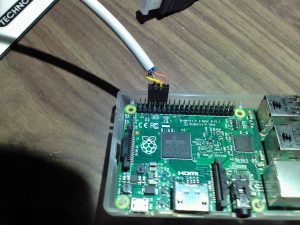 When it comes to the serial connection you have several options. If you happen to be like me, with boxes of old computer cables, you can simply cut one and put a flat connector on the end of it. Here is a link to the Pi pinout and a link to the standard DB9 pinout. On the large Pi connector you need to use these 3 pins:
When it comes to the serial connection you have several options. If you happen to be like me, with boxes of old computer cables, you can simply cut one and put a flat connector on the end of it. Here is a link to the Pi pinout and a link to the standard DB9 pinout. On the large Pi connector you need to use these 3 pins:
6 – Ground
8 – Transmit
10 – Receive
Here is my latest box of cables I swore I would never buy again.
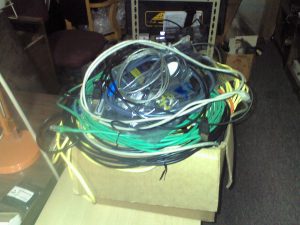
I have either dropped off for recycling or resale at least 4 other boxes this size full of cables over my career. By resale I mean walked into a used computer store carrying a massive box of cables, dropped it on a table and when the clerk looked at me I said “Merry Christmas” and walked out before he had a chance to refuse. How do I end up with these boxes of cables? I’m a traveling consultant. Every time I show up at a client site where they want me to work on something connected by cables I always ask “do you have everything I need” before leaving. They always respond “Oh, yes, yes, purchasing has taken care of everything.” When I arrive they ether have the wrong stuff, no stuff or Walmart quality stuff which cannot do the job. This means some frantic Web searches for local retailer, killing lunch hour or more driving to get the cabling I need. Eventually they get their own and I’m stuck with the stuff I bought.
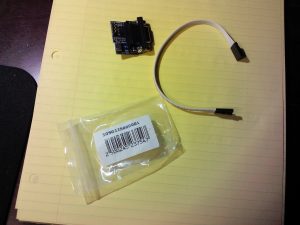 You can also buy one of these DB9 adapter card things. I actually purchased a pair but have yet to use either. Why? They came with no documentation and the markings on the wires mean nothing to me. I have “kind of” figured out TX and RX, but this card looks like it also wants power with the ground. I also wonder about the microUSB connector on the far right edge.
You can also buy one of these DB9 adapter card things. I actually purchased a pair but have yet to use either. Why? They came with no documentation and the markings on the wires mean nothing to me. I have “kind of” figured out TX and RX, but this card looks like it also wants power with the ground. I also wonder about the microUSB connector on the far right edge.
No matter which way you go when connecting you need to obtain an RS-232 Mini-Tester. Mine is so old it is DB25. I mean I bought this thing back when DOS and OS/2 were the primary desktop operating systems. If you don’t remember either of those operating systems then this tester is probably older than you.

Notice the green lights? This is what it looks like when you connect to the back of your computer but don’t have the other end connected. When their is “logic” on both sides of a pin the light turns red. When you are transmitting you will see TD and RD lights flickering between red and green.
Oh yes, you need a real computer. For this project I’m using an HP 8100 Elite slim case unit with an I7 quad core. I picked this thing up refurbished for a client site project and have since jacked it to 16Gig of RAM and put a super fast 1TB hard drive in it, not to mention an NVIDIA video card with 384 Cuda core. It is currently running Ubuntu 16.04 64-bit. While you don’t need anywhere near that much machine for this project we will be using Linux and you do need one particular piece of hardware this machine came standard with. A DB9 serial port.
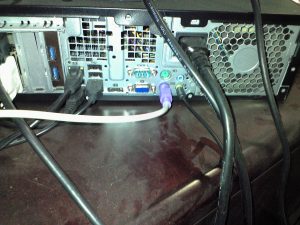 If you are trying to use a computer which has one of those tiny slot add in serial ports instead of something built into the motherboard, best of luck to you. My experience with those is they are a waste of time. They generally require all kind of Windows only drivers and even then they barely function. As much as I trash HP for its multi-generational incompetent management teams, somewhere some engineer at the company seems to always make sure they manufacture at least one model which is suitable for engineering use. Most times you can get around not having a parallel port but you need at least one built in serial port. Even better if you have 2.
If you are trying to use a computer which has one of those tiny slot add in serial ports instead of something built into the motherboard, best of luck to you. My experience with those is they are a waste of time. They generally require all kind of Windows only drivers and even then they barely function. As much as I trash HP for its multi-generational incompetent management teams, somewhere some engineer at the company seems to always make sure they manufacture at least one model which is suitable for engineering use. Most times you can get around not having a parallel port but you need at least one built in serial port. Even better if you have 2.
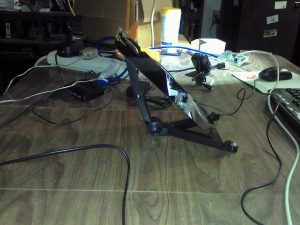 Since I didn’t buy all of this stuff at once and I wanted this to be a touch screen applications I also purchased a touch screen kit some months back. I shopped and I shopped and the “best” deal I could find was from Chalkboard Electronics. The 10” kit ended up costing me $197.58 delivered but I see they have come down some. It came with a mount for the Pi (which I’m not currently using) and an adjustable stand. Yes, you can find cheaper touch screens but they aren’t capacitive multitouch. If you want to do gestures such as zooming in and out by opening and closing a pinch of your fingers, you need capacitive multitouch.
Since I didn’t buy all of this stuff at once and I wanted this to be a touch screen applications I also purchased a touch screen kit some months back. I shopped and I shopped and the “best” deal I could find was from Chalkboard Electronics. The 10” kit ended up costing me $197.58 delivered but I see they have come down some. It came with a mount for the Pi (which I’m not currently using) and an adjustable stand. Yes, you can find cheaper touch screens but they aren’t capacitive multitouch. If you want to do gestures such as zooming in and out by opening and closing a pinch of your fingers, you need capacitive multitouch.
Since we all seem to have extra mice, keyboards and thumb drives we can safely skip listing them.
